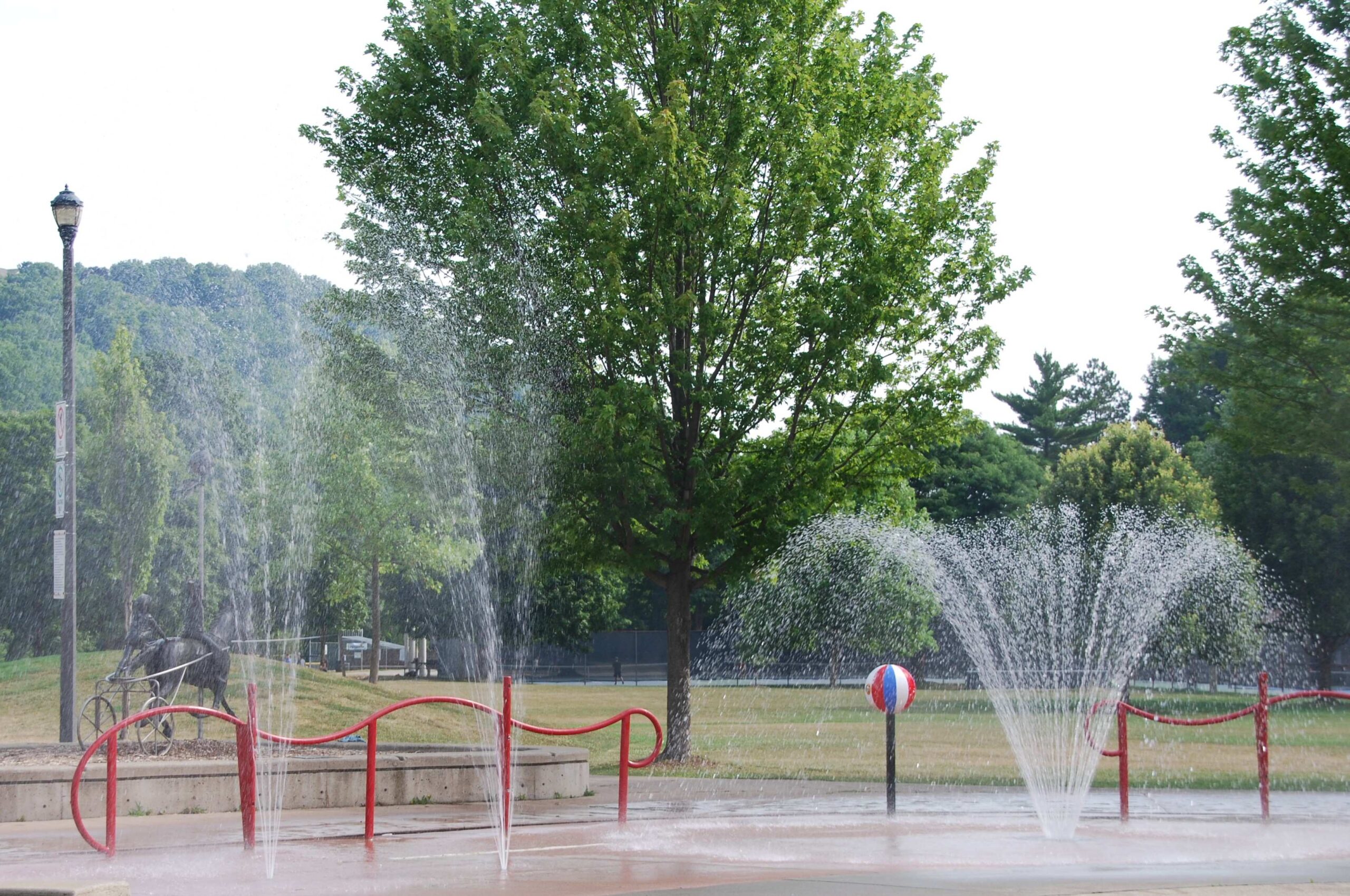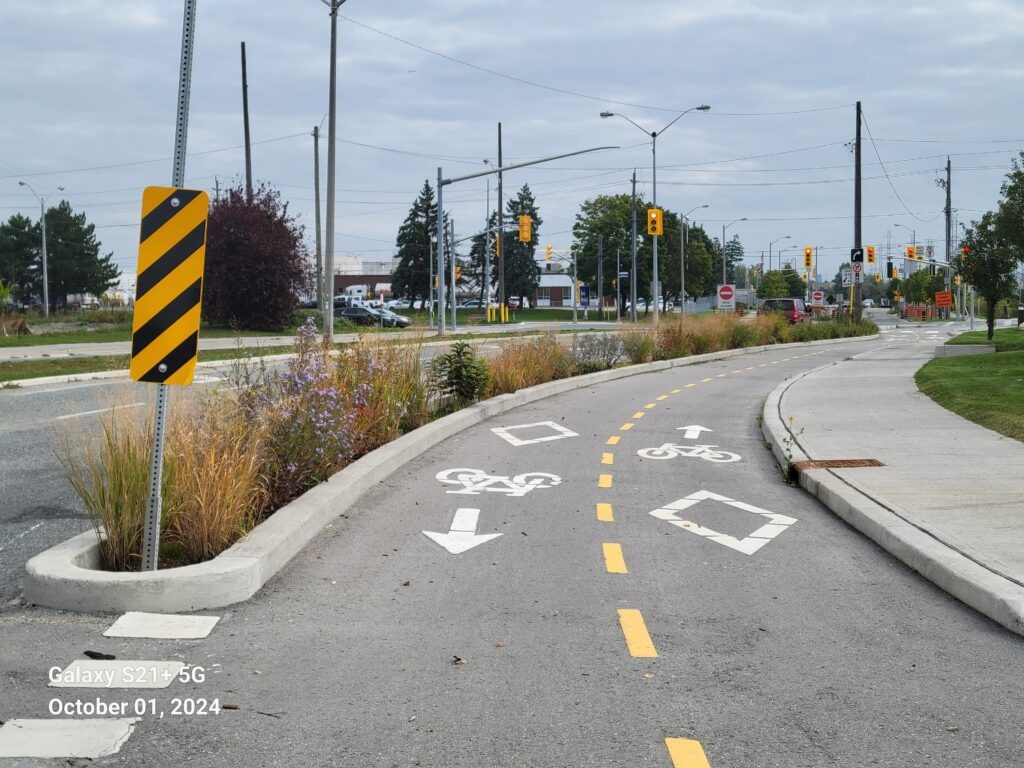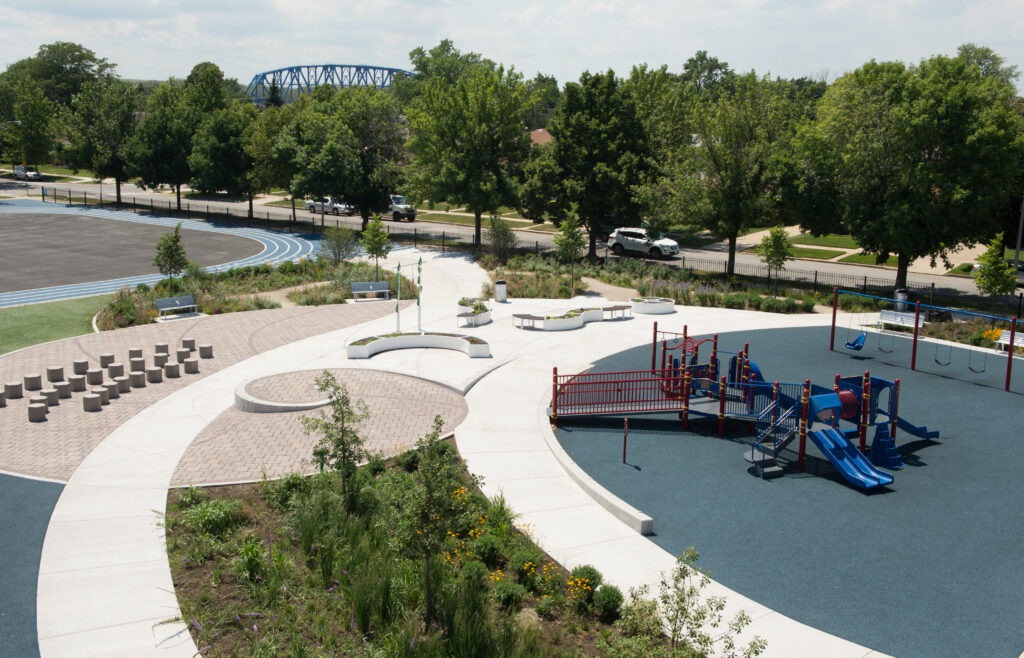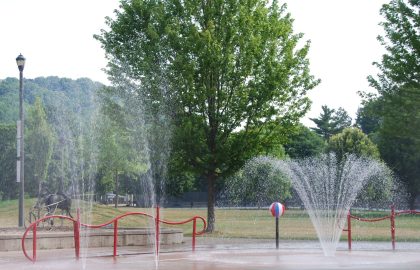
Heat in Hamilton
The City of Hamilton has developed an equity-based Community Heat Response Strategy to offer greater protection to those people in its community who are at greatest risk of harm from extreme heat.
With human-fueled climate change, extreme heat is becoming a greater health concern for communities across Canada. In Hamilton, which wraps around the western tip of Lake Ontario, the mean number of days over 30 degree C is on track to increase from 16.2 between 1976-2005 to 37.2 between 2021 and 2050. (https://climateatlas.ca/)
Who is at greatest risk?
Everyone is at risk from heat-related illnesses and death from extreme heat, but some populations are at greater risk. At-risk populations include older people, very young children, and those with pre-existing health conditions; outdoor workers, migrant workers, and those who live or work in urban heat islands without air conditioning; and those who live on low-income or are unhoused.
Multi-Sectoral Collaboration
Hamilton’s Community Heat Response Strategy is only one component of the city’s overall Climate Change Action Plan. This strategy is being led by Public Health Services, which is part of the Healthy and Safe Communities department within the City. The strategy is being developed and implemented in collaboration with several other divisions and departments within the City including Housing Services, City Housing, Parks and Cemeteries, the City’s transit authority, Recreation, and the Hamilton Public Library.
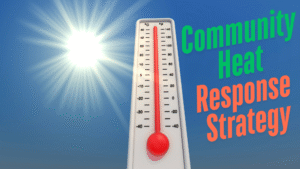
The Community Heat Response Strategy includes 10 elements that are the responsibility of different departments within the City. Several of those elements are common to Heat Alert and Response Systems (HARS) offered by public health agencies and/or municipalities across the country including: heat warnings, education, the provision of cool spaces for at-risk populations, and population surveillance for heat-related illnesses and calls for emergency services.
A few elements in Hamilton’s strategy go beyond those commonly included in HARS such as the expansion of the tree canopy and the installation of shade structures and misting stations in parks. It also includes several innovative elements that are directed specifically at the health needs of at-risk populations:
Wellness Check-ins:
Wellness check-ins are provided by the City’s paramedics for older adults and those with pre-existing health conditions who have enrolled for the Mobile Integrated Health Program.
Cool Kits:
City staff and community organizations distribute Cool Kits to high-risk populations. For housed people, Cool Kits include ice packs, reusable water bottles, cooling neckties, fridge magnets with health tips, thermometers, and information on the health impacts of extreme heat. The Cool Kits for unhoused people include hats, sunglasses, sunscreen, reusable water bottles, and a list of cool spaces and locations to refill water bottles across the city.
Cooling Support:
In 2024, the City launched a pilot program to help low-income individuals with medical conditions that are aggravated by heat to stay cool at home. Eligible residents could receive a one-time $350 subsidy per household to buy an energy-efficient air conditioner to cool one area of their homes.
Originally, the program was only available to people receiving Social Assistance but the pilot has expanded eligibility to include anyone living below the Low Income Measure. This program is budgeted to continue in 2025 with up to 50 eligible households being supported each year on a first-come, first-served basis. This expanded support is in addition to the existing air conditioner program offered for Social Assistance recipients.
Adequate Temperature Bylaw:
At the request of City Council, City staff are developing an Adequate Temperature By-Law that may provide maximum temperatures for residential rental units within the city.
Transportation to Cool Spaces:
In 2024, 2000 bus tickets were allocated to at-risk populations to help them reach cool spaces during extreme heat events. These tickets were distributed by City staff and community partners to unhoused and low-income populations in Cool Kits and through recreational centres across the city.
Community Engagement
The strategy has been informed and supported by a broad group of individuals and organizations from the community that represent or serve different at-risk populations within the city. These community partners include groups such as ACORN that advocate on behalf of tenants, the Accessibility Committee for Persons with Disabilities, The Seniors Advisory Committee, Environment Hamilton, the YWCA, the Hamilton Community Legal Clinic, and the Hamilton and District Apartment Association.
Community partners have been included in virtual meetings facilitated by Public Health Services along with staff from other departments. This group of people, which is called the Extreme Heat Working Group, includes over 40 people. These meetings have been used to provide updates from City staff, solicit advice from community members, and coordinate actions across City departments and community groups.
“Community engagement has been crucial to the development and implementation of the strategy,” noted Rogers. “Community members have offered fresh ideas and practical advice that is based on their lived experience or that of the people they serve. The community groups have also brought resources and support to the table. For example, they helped us distribute Cool Kits and health information to the at-risk populations that we are trying to reach.”
Identified those at risk with geospatial tools
Hamilton staff worked with the interactive mapping tool developed by Université Laval to identify the areas in the city that are home to high-risk populations. They used socio-economic data related to factors such as age, income, and the type of dwelling, and environmental data such as surface temperature and vegetation in this mapping exercise. The mapping tool identified Wards 2, 3, and 4, that border heavy industry on the south shore of Lake Ontario, as the neighbourhoods with the populations at greatest risk from extreme heat. (Figure from https://healthyplan.city/en)
“We have used the geospatial tool to: identify the neighbourhoods that should be prioritized for Cool Kits and educational resources; create maps that identify the location of cool spaces for at-risk populations; and evaluate our programs to see if they are reaching the neighbourhoods with the greatest need,” explained Rogers.
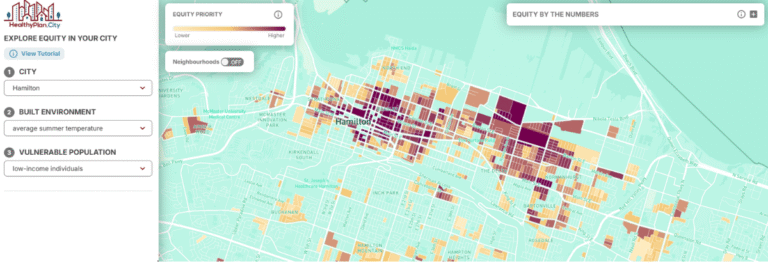
Challenges and Lessons Learned:
Funding: There was no external funding for this work. All of the funding came from the operational budgets of various departments across the City as well as the Climate Change Reserve.
